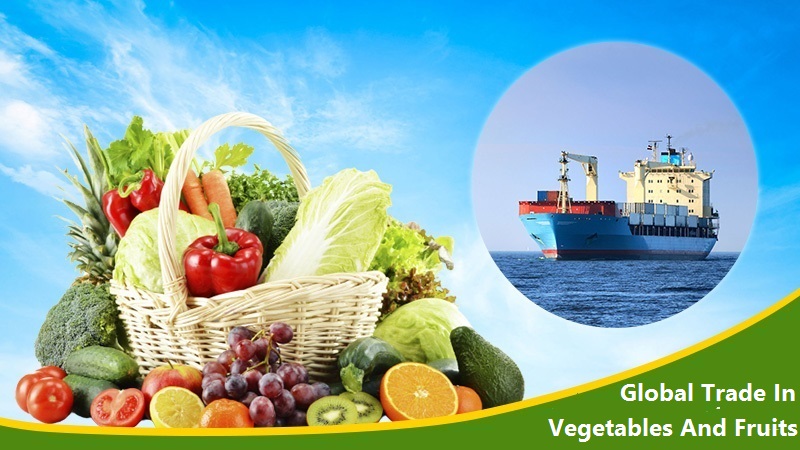An overview of the international market for vegetables and fruits, including key players and trends.
Introduction
Global trade in fruits and vegetables is a crucial component of the global food industry, providing access to a diverse range of fresh produce worldwide. This trade is driven by the expanding agricultural sector, fueled by a growing global population and increased food demand. Fresh fruits and vegetables are essential for a balanced and nutritious diet, as they are rich in vital vitamins and minerals needed to address various health conditions and deficiencies. In essence, international trade in fruits and vegetables is vital for meeting the rising demand for fresh produce, promoting food diversity, fostering economic growth, and ensuring global access to nutritious foods. This overview provides insights into the international market for these commodities, including key players, emerging trends, and the challenges faced in this dynamic sector.

Key Players
Key players in the global vegetable and fruit trade include both individual countries and multinational corporations. Leading countries in production and export often include the United States, China, India, countries in the European Union and…
Multinational corporations involved in this trade include companies engaged in agriculture, logistics, and retail,
Trends
- Growing Demand: There is a rising global demand for fruits and vegetables due to increasing awareness of their health benefits.
- Food Safety and Sustainability: Increasingly, consumers prioritize food safety and sustainability, compelling producers and exporters to embrace eco-friendly and responsible practices.
- Technological Advancements: Technology is reshaping the industry through precision agriculture, controlled environment agriculture, and the integration of blockchain for enhanced supply chain transparency.
- Importance of Global Trade: Global trade in vegetables and fruits is crucial for ensuring a stable food supply and providing consumers with access to a wide range of produce year-round. It allows countries to obtain products that may not be locally available due to seasonality or climate constraints.
- Diversity of Products: The trade involves a diverse range of products, including fresh produce, frozen and canned fruits and vegetables, juices, dried fruits, and processed products like tomato sauce and fruit preserves.
- Regulations and Standards: Global trade in fruits and vegetables is subject to various regulations and standards, particularly related to quality, safety, and phytosanitary measures. These regulations are in place to ensure the safety of the produce and protect against the spread of pests and diseases.
- Transportation and Logistics: The perishable nature of many fruits and vegetables necessitates efficient transportation and logistics systems. Cold chain management, including refrigerated storage and transportation, is critical to maintaining product quality.
- Impact on Local Agriculture: Global trade can have both positive and negative impacts on local agriculture. It can open up new markets for producers, but it can also lead to competition from cheaper imports, affecting local farmers.
- Trade Agreements: Bilateral and multilateral trade agreements play a significant role in shaping the global trade in fruits and vegetables. Trade agreements can reduce tariffs, ease customs procedures, and establish rules for trade.
- Consumer Demand: Changing consumer preferences, including a growing demand for healthy and fresh foods, impact global trade trends in fruits and vegetables. Consumers are increasingly looking for organic, locally sourced, and sustainably produced options.
Challenges
- Logistical Challenges: The perishable nature of these products demands efficient transportation and storage infrastructure. Some regions may lack this infrastructure, leading to losses in quality and quantity.
- Price Volatility: Market prices can experience significant fluctuations due to shifts in supply and demand, along with external factors like weather conditions.
- Quality Control: Maintaining consistent quality and freshness during long-distance transportation is a formidable challenge, demanding meticulous handling and continuous monitoring.
Conclusion
In summary, global trade in fruits and vegetables plays a pivotal role within the global food system, offering a diverse and year-round supply of fresh produce. This market is characterized by its dynamic nature and contributions from various geographical regions. Current trends underscore the significance of sustainability, the integration of technology, and evolving consumer preferences. Nonetheless, the industry grapples with challenges such as regulatory constraints, quality control, competition, and logistical hurdles, necessitating careful attention. Sustainable and responsible trade practices are of utmost importance to meet the surging demand for these products while addressing environmental and social concerns. Consequently, the adaptability and resilience of the industry are paramount in ensuring a consistent supply of fresh produce to satisfy the ever-expanding global demand.
